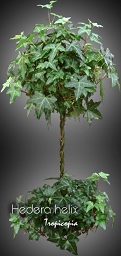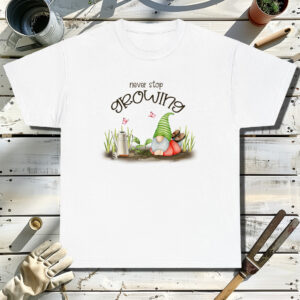Table of contents
English ivy

Latin Name: Hedera helix
Category: Topiairy
Family: Araliaceae
Origin: Cultivar
Climate: Subtropical
Growing Zones: 11, 8
Care Instructions
The English ivy (Hedera helix) is a subtropical plant that originates from Cultivar. This topiairy plant belongs to the Araliaceae family and is well-suited for growing in USDA zones 11, 8.
Complete Care Guide for English Ivy (Hedera helix)
Watering Requirements
English Ivy (Hedera helix) thrives best with consistent moisture, but it is crucial to avoid overwatering. The general rule of thumb is to water the plant when the top inch of soil feels dry to the touch. During the growing season (spring and summer), this may mean watering once a week, while in the dormant season (fall and winter), you can reduce the frequency to every two weeks. Ensure that the pot has drainage holes to prevent water from accumulating at the bottom, which can lead to root rot. If you notice the leaves turning yellow, it may be a sign of overwatering, while browning leaf tips can indicate underwatering.
Light Conditions
English Ivy prefers bright, indirect light but can adapt to a range of lighting conditions. Ideally, place your ivy near a window that receives filtered sunlight. Direct sunlight can scorch the leaves, leading to browning and damage. If you notice the plant becoming leggy or sparse, it may be a sign that it is not receiving enough light. In lower light conditions, English Ivy can still survive, but growth may slow down significantly. For optimal growth, consider rotating the plant occasionally to ensure even light exposure on all sides.
Soil Preferences
English Ivy thrives in well-draining soil that retains some moisture without becoming soggy. A high-quality potting mix that includes peat moss, perlite, and compost is ideal. This combination provides the necessary nutrients while ensuring good drainage. If you are planting English Ivy outdoors, aim for a slightly acidic to neutral pH (around 6.0 to 7.0). Fertilization is not typically necessary during the winter months, but during the growing season, you can apply a balanced, water-soluble fertilizer every 4-6 weeks to promote healthy growth and vibrant foliage.
Pests and Diseases
English Ivy is generally resilient but can be susceptible to pests such as spider mites, aphids, and mealybugs. Regularly inspect the undersides of leaves for signs of infestation. If you notice small webs or sticky residue, it may indicate spider mites. To treat pests, you can wash the leaves with a gentle stream of water or use insecticidal soap. Additionally, English Ivy can be prone to diseases like root rot and leaf spot, often caused by overwatering or poor air circulation. Ensure proper watering practices and provide adequate spacing between plants to promote airflow and reduce humidity around the foliage.
Special Care Tips
To keep your English Ivy healthy and thriving, consider the following special care tips: First, regularly prune the plant to encourage bushier growth and remove any dead or yellowing leaves. This not only enhances the plant’s appearance but also helps prevent disease. Second, if you are growing English Ivy indoors, be mindful of the humidity levels; these plants appreciate a humid environment, so misting the leaves occasionally can be beneficial. Lastly, if you plan to grow English Ivy outdoors, be aware that it can become invasive in some regions, so monitor its growth and contain it as necessary. With proper care, English Ivy can be a beautiful and resilient addition to your home or garden.








